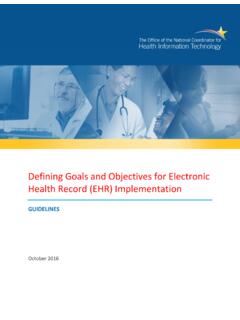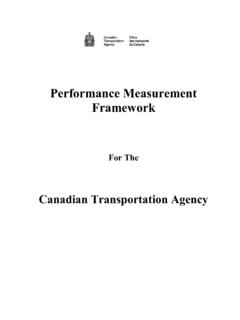Transcription of Effective Corporate Budgeting in 8 Easy Steps
1 2017 Corporate Renaissance Group This eBook will offer 8 easy and easy and proven Steps for improving your Corporate Budgeting and planning process. You will see that by making a few small changes, you can transform this traditionally annual event into an ongoing process that is both strategic and Effective . Effective Corporate Budgeting in 8 Easy Steps 2 (C) 2017 Corporate Renaissance Group Introduction | Why Change? | 8 Easy Steps | Solutions | Conclusion Can you build a better Budgeting process? Budgeting is likely not high on your list of favorite things to do or anyone else s, for that matter. Nonetheless, budget time comes around each year like clockwork. Business units complain about the amount of time the process will take and managers grumble over conflicting goals. Meanwhile, it s up to you to ensure that the budgets are submitted and approved on time. So why do we do it? Formal budgets not only limit expenditures; they also predict income, profits, and returns on investment a year ahead.
2 Although it seems that we don t like living with budgets, we certainly can t operate effectively without them. As finance leaders, we must do two things: Effectively articulate the reasons for a better Budgeting process. Improve the Budgeting process in order to minimize the headaches and maximize the positive outcomes. Neither is easy, but both are possible, and the means for doing so are fairly straightforward. 3 (C) 2017 Corporate Renaissance Group Introduction | Why Change? | 8 Easy Steps | Solutions | Conclusion Articulating the reasons for a better Budgeting process Finance professionals know the reasons for creating a better Budgeting process, and yet those reasons are still difficult to articulate in a truly convincing way. The most important reasons for improving your Budgeting process are: Planning: Budgeting forces managers to create a definite and detailed financial plan for the coming year. To construct a budget , managers have to establish financial objectives for the coming year and identify exactly what has to be done to accomplish these objectives .
3 Budgeting can also yield other important planning-related benefits: Budgeting encourages a business to articulate its vision, strategy, and goals. Budgeting imposes discipline and deadlines on the planning process. Management control: Budgets also serve a management-control function. Achieving the financial goals and objectives of the business requires comparing actual performance against benchmarks and holding individual managers responsible for keeping the business on schedule in reaching its financial objectives . By using budget targets as benchmarks, managers can closely monitor progress toward (or deviations from) the budget goals and timetable. Significant variations raise red flags, in which case business unit heads can determine that performance is off course or that the budget needs to be revised because of unexpected developments. 4 (C) 2017 Corporate Renaissance Group Introduction | Why Change? | 8 Easy Steps | Solutions | Conclusion 8 Steps to Improving your Budgeting Process Just as we can list a good number of reasons why a better Budgeting process is needed, we could also list a number of reasons why some managers find the process painful.
4 We will look at how the biggest pain points can be addressed. The following are suggestions on how you can simplify your Budgeting cycle, make the process less painful, and ensure that your organization gets the most out of its Budgeting , planning and forecasting activities. Step 1 - Align Your budget to a Strategic Plan The Budgeting process is often completed in a silo independent of the strategic plan which can create a disconnect at the operational level. When this happens, the budget may communicate targets and focus energy and resources on areas in the near-term that are not aligned with the organization s long-term strategy. A Budgeting process that is aligned with the strategic plan can better focus the allocation energy and resources towards delivering on business objectives , tracking progress at an operational level and identifying and closing performance gaps. 5 (C) 2017 Corporate Renaissance Group Introduction | Why Change? | 8 Easy Steps | Solutions | Conclusion Step 2 - Create a Clear Process and Workflow Many times, Excel workbooks are sent out to all the managers involved in the Budgeting process, to be completed and submitted.
5 Then the finance team consolidates all of the numbers in an effort to push out the budget for that year. In other words, there is typically a lot of time lost to administering the Budgeting process. It doesn t have to be this way! With Budgeting technology available today you are able to deliver a visual workflow that is clear and transparent. This gives managers a clear understanding of the Steps in the Budgeting process, when those Steps are due, and whether or not they are complete. Having an automated workflow and progress reporting allows a budget supervisor or anyone involved in the approval process to see: how many contributors are in progress, how many have submitted their numbers, how many submissions have been rejected or approved, and whether there is anyone having challenges who may require assistance. With a visual workflow, processes are more transparent and flow more smoothly with less need for manual checks and interventions along the way. budget contributors and the finance team spend less time on the budget administration, leaving more time for analyzing the data and taking action.
6 6 (C) 2017 Corporate Renaissance Group Introduction | Why Change? | 8 Easy Steps | Solutions | Conclusion Step 3 - Improve Accessibility A major challenge that many organizations face is making it easy for contributors to complete the budget regardless of where they happen to be physically located. There are solutions today that provide flexibility to budget contributors, offering them a variety of tools whereby they can access the budget application and submit their entries on time. Whether they are using a laptop or a workstation in the office or they are out of the office with access to a tablet, phone or other mobile device, there are modern Budgeting solutions that give the ability to enter budgets on time using whatever device is most convenient. Even if contributors do not have access to the Internet because they are out of range for service or on a plane, they have the ability to enter data offline and then upload the data to the budget at a later time when they do have connectivity.
7 7 (C) 2017 Corporate Renaissance Group Introduction | Why Change? | 8 Easy Steps | Solutions | Conclusion Step 4 - Use Driver-Based Planning Have you ever wondered how meaningful a budget is if the input required is not controllable or meaningful to the budget contributors? Using driver-based Budgeting an approach that bases financial forecasts on operational drivers data can be broken down beyond the financial values into sub-components and drivers that the contributors are more familiar with and have more control over. The rates can be established upfront and then the business unit managers simply input the units or values they control. The Budgeting application then uses business logic to calculate the output automatically. For example, on the sales side, you may ask a sales manager to enter the number of product units they are planning to ship, or the number of service hours they are planning to bill.
8 The standard prices may be fixed in the system but they are given the ability to add a discount if required. On the payroll side, HR would set up the various employee pay grades in the application with appropriate benefits, taxes, fringe benefits, pension rates, etc. This means that the cost center managers would only need to consider the headcount and work schedule for the people who work within their cost center. They key in the date of hire and the pay grade (or employee class if that s relevant) and everything else is calculated automatically using business logic. With capital expenditures, the different asset classes and depreciation rates would be set up in the system so that cost center managers need only enter the type and number of units, and perhaps the price of the asset they are buying. Other calculations such as depreciation would update automatically. Setting up a driver-based plan provides a more dynamic platform for testing scenarios and simulations using the different drivers.
9 8 (C) 2017 Corporate Renaissance Group Introduction | Why Change? | 8 Easy Steps | Solutions | Conclusion Step 5 - Test Scenarios and Simulations In many cases, when budgets are being developed by teams it is an exercise of entering what is expected to happen. Teams may simply enter their best guess into the template and then they are done for the year the chore is over. Now imagine how much more meaningful and interactive it would be if you could provide those teams with the ability to test different scenarios and do simulations in order to test their assumptions. In fact, there are software solutions that provide the capacity to set up models that allow for these comparisons. Contributors have the ability to look at best case and worst case scenarios and make comparisons. For example, if we want to achieve our target growth in sales next year, how many more units would we have to sell and can this volume be achieved at this price?
10 What would happen to our bottom line if the exchange rate changed dramatically next year? As these realities begin to play out through the year, the budget can be adjusted accordingly to enable easy re-forecasting of the rest of the year. 9 (C) 2017 Corporate Renaissance Group Introduction | Why Change? | 8 Easy Steps | Solutions | Conclusion Step 6 - Support with Explanations What good is it to enter values into a budget without adding comments or annotations to explain where those values are coming from? For example, if there is a spike in units in July for some reason, how do we find out where that spike is coming from? When you are building next years budget and looking back at the previous year you see no explanation for that spike, you will have to track the person down and hope they remember their reasoning. There are Budgeting solutions available that provide this ability to store comments and supportive documents as attachments that are tied to particular data points.




